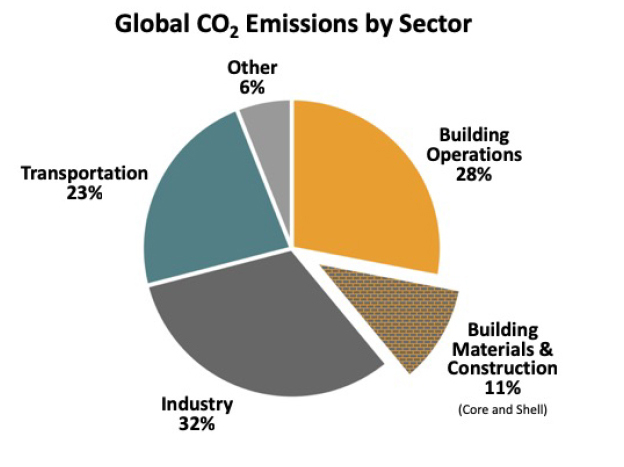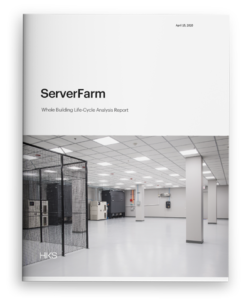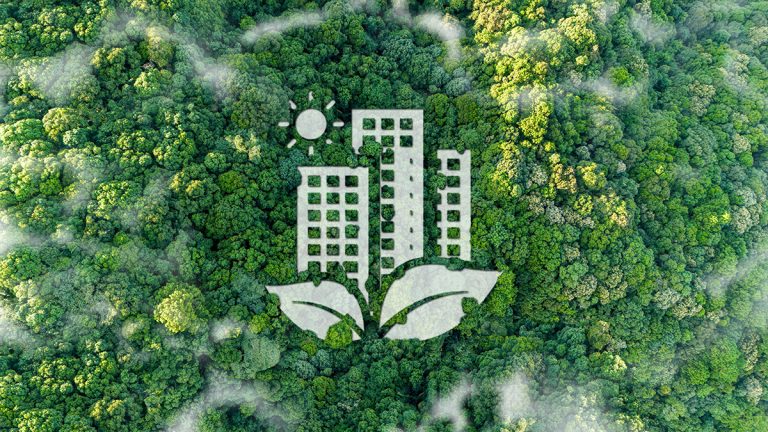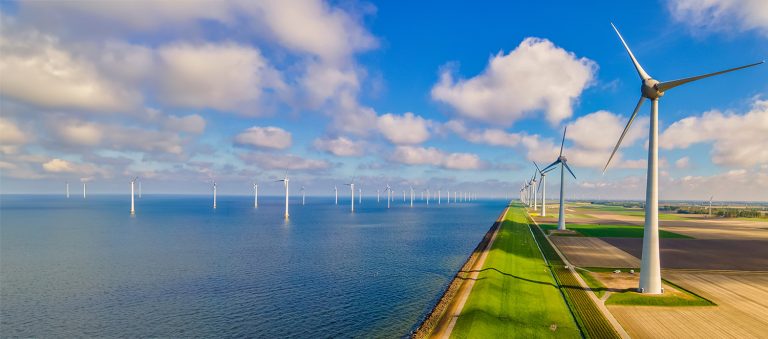Buildings and construction directly represent around 39% of all annual global greenhouse gas emissions.
“These emissions can be divided into two categories, building operations and building materials & construction. Each represents the operational carbon and the embodied carbon of buildings respectively,” says HKS.
HKS analyzed Serverfarm’s Chicago facility, a six-story building of just under 150,000 square feet with a capacity for housing more than 4,000 server cabinets. With a rack consumption of 61,320 kWh, the building consumes 25MW of power annually.
Were such a building to be constructed today using standard materials, the carbon cost, carbon dioxide equivalent or CO2e, would be 9,425,673kgs (use of low carbon materials would see a carbon cost of 8,301,691kg but add significantly to the financial cost).
The carbon costs were itemized by material including concrete, steel, glass, wood, plastics, composites, thermal and moisture protection, openings and glazing, and finishes. The factors analyzed by HKS covered potential for global warming, acidification, eutrophication, smog formation and cost of production in non-renewable energy.















